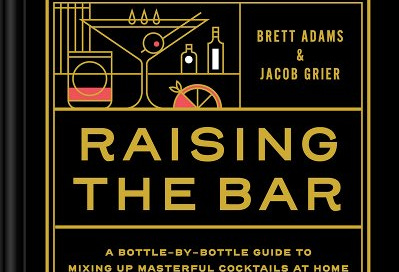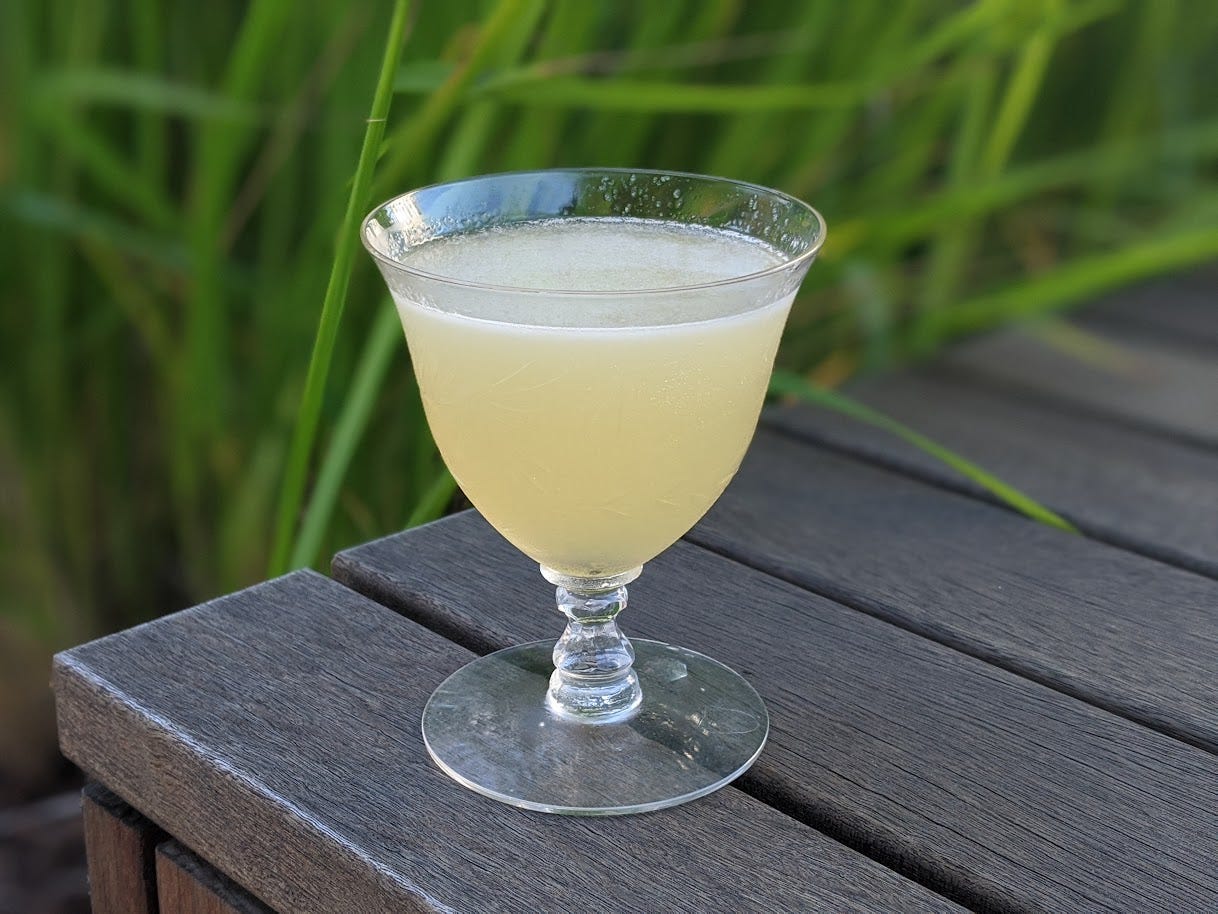New book alert! Raising the Bar is coming soon
You know when would have been a great time to publish a book about making cocktails at home? 2020. Instead, that’s when my friend Brett Adams and I started pitching a book on the subject. Publishers were looking at our proposal right around the same time that the reality of the pandemic was setting in. We knew we had a good idea, but we also knew that the world was changing and the global economy crashing down. Despite promising interest from publishers, we wondered if our yet-to-be-written book would be undone by unlucky timing.
Fortunately, it wasn’t. Our editor at Chronicle came through with an offer. For the past two years, we’ve all worked hard on putting this book together. And soon – November 29, to be exact – you’ll be able to read it! We can’t wait to share with you Raising the Bar: A Bottle-by-Bottle Guide to Mixing Masterful Cocktails at Home.
Why another cocktail book? Although we’re professional bartenders, working together in a fancy bar with around 2,000 bottles that allow us to make just about any cocktail you can imagine, we wanted to write a book that started from the very beginning with the home bartender in mind. Most authors take a different approach, either drawing from a list of standards or featuring signature recipes from notable cocktail destinations. These books can be great! But they can also be frustrating, especially when you just want to make a fun new cocktail with ingredients you have on hand. My own home bar has more than 200 bottles, but I often find myself perusing contemporary cocktail books struggling to find more than a handful of drinks that I can readily make. With Raising the Bar, we decided to start from scratch thinking about a different way to curate a cocktail book.
We gave ourselves three rules when planning this book. The first is that we would draw on a simple pantry of items that anyone can keep on hand. Think lemons and limes, fresh mint, a few syrups, and the classic trinity of bitters, Angostura, orange, and Peychaud’s. We don’t call for any exotic fruits, complicated syrups, or esoteric bitters. We love that stuff at work, but at home we tend to keep things a little simpler.
Our second rule, as Alton Brown would say, is no unitaskers. A unitasker is a kitchen device that only does one thing and clutters your drawers. A lot of cocktail books are full of recipes calling for the mixology equivalent of unitaskers, asking the reader to go out and buy a bottle of booze or make a homemade ingredient that only gets used in one drink. Again, that’s great in a professional bar. But at home? That’s how you end up with a bunch of dusty bottles on the shelf that you don’t know what to do with. We kept our focus on the most versatile ingredients. When we call for a spirit, bitters, or syrup in our book, it’s because we’re giving you many recipes in which to use it.
Our third and most important rule is taking things one bottle at a time. We don’t assume that the reader will have every bottle on hand from the beginning. Instead, we guide readers through stocking their home bar gradually. We start with just one bottle of bourbon and teach the basics of mixing a variety of cocktails using only the items in the pantry. Then we add another bottle, and another, each one unlocking new possibilities and more complex combinations. This means, for example, that we don’t call for Benedictine in a recipe until we get to the chapter on Benedictine. But then we’ll give you a bunch of recipes with Benedictine and the ingredient is in play for the rest of the book. This enables readers to follow along at their own pace, and if they follow our lead and go in order they’ll never experience the frustration of not having the ingredients they need to make the drinks.
The most fun part of writing this book was figuring out which bottles to include and what order to feature them in. Brett and I collaborated on a massive spreadsheet of hundreds of recipes, making countless cocktails and comparing notes while social distancing. It was a lot of work, or at least as much work as writing about cocktails can be, and we had to ruthlessly cut some favorites. (Sorry, Galliano lovers.) In the end, we dialed in twenty-five chapters that we can confidently say will make up a pretty stellar home bar.
We’re very excited about how the book has turned out and believe there’s something in it for everyone. It’s written to be approachable for an absolute beginner, but with more than 200 recipes including classics, vintage gems, contributions from contemporary bartenders, and a few of our own creations, readers of all experience levels will find something new. And also? It looks great. With fun and stylish illustrations from Woody Harrington, you’re going to enjoy flipping through it and keeping it out on your bar cart.
Raising the Bar is now off to the printer, which means we’re on our way to the most fun part of being cocktail writers: getting our book out into the world and into your hands, and hopefully sharing a drink with you soon virtually or at an in-person event.
Want to be sure to get Raising the Bar as soon as it comes out? We’d love it if you did! It’s now available for pre-order wherever good books are sold, including: Powell’s, Amazon, IndieBound, Barnes & Noble, Books-a-Million, and Bookshop.
(Very minor note: the cover above is not quite the final version; the word “up” will be removed from the subtitle in the final print.)
Dealer’s choices
To drink: Today’s newsletter is all about the book, so how about a preview? I mentioned Benedictine and I’m not kidding when I tell you that we’re going to give your bottle a workout. I’ve always kept a bottle on hand for a Vieux Carré or the occasional other cocktail, but one of the surprises of writing this book was just how versatile this venerable old herbal liqueur really is. Now I reach for it all the time. I probably went through more Benedictine over the past two years than I did in my entire life up to 2020.
Benedictine is most often used in small amounts as an accent to a drink. In this one, we’re going to use a more substantial pour. The Queen Elizabeth is an odd vintage drink that doesn’t call for any of your typical base spirits, instead mixing dry vermouth with Benedictine and lime juice. It’s a weird build but it works out quite nicely, and its relatively low proof makes it a great choice for outdoor summer sessions.
1 1/2 oz dry vermouth
3/4 oz Benedictine
3/4 oz lime juice
Shake with ice, strain into a chilled coupe, and serve.




